The Wisconsin Badgers are back in the Elite 8. The Badgers faced off against the No. 2 Stanford Cardinal on Friday afternoon, winning 3-1 to face the No. 1-seeded Texas Longhorns in the Elite Eight on Sunday.
Sports
WCWS schedule
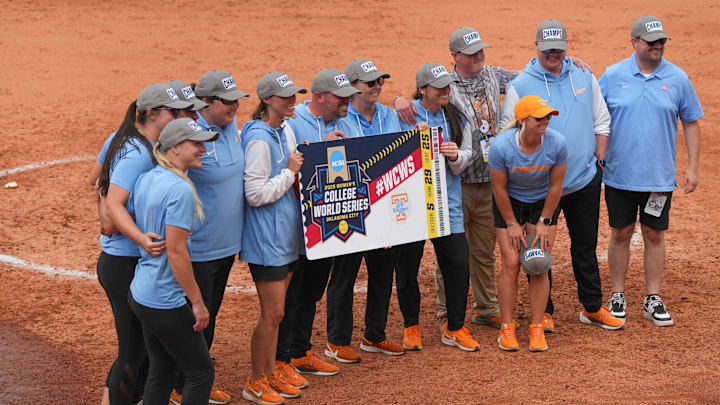
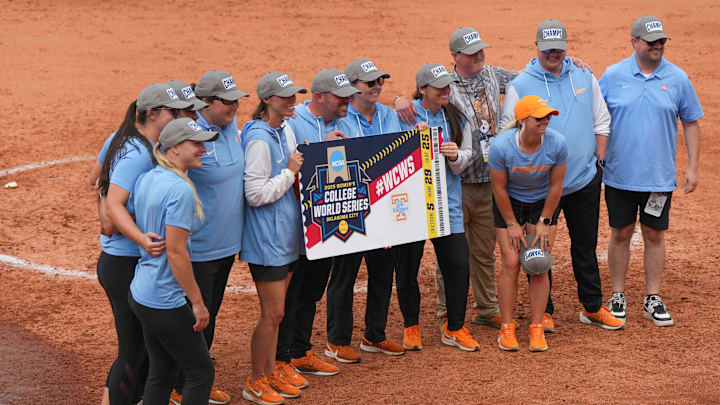
 By the end of the weekend, the 2025 Women’s College World Series field will be trimmed in half.
By the end of the weekend, the 2025 Women’s College World Series field will be trimmed in half.
What began as an eight-team event on Thursday will be down to four national championship aspirants after a pair of elimination games Sunday pitting No. 7 Tennessee against No. 9 UCLA and No. 16 Oregon against No. 2 Oklahoma.
The most surprising inclusion of the bunch is undoubtedly the Sooners, the four-time reigning NCAA champions. Coach Patty Gasso’s team followed up a walk-off victory Thursday against Tennessee with a 4-2 loss to archrival No. 6 Texas on Saturday in a rematch of last year’s WCWS championship series.
The winner of the game between the Lady Vols and Bruins will advance to the national semifinals to take on Texas while the winner between the Sooners and Ducks will earn a date with Texas Tech in the semifinals. Both of those games are scheduled for Monday.
Here’s a look at the schedule for Day 4 of the WCWS on June 1, including matchups, start times, TV channels and more:
Women’s College World Series games today
The fourth day of the 2025 Women’s College World Series will take place Sunday with a pair of elimination games.
In the first matchup, No. 7 Tennessee will take on No. 9 UCLA, with the winner advancing to play Monday against Texas. The second game will pit No. 16 Oregon against No. 2 Oklahoma, with the winner of the game moving on to face Texas Tech Monday.
Here’s a look at Sunday’s full WCWS schedule:
All times Eastern
Who is in the Women’s College World Series?
The WCWS began Thursday with eight teams vying for a national championship, a field that has been narrowed down to four.
Here’s who remains, with the names of eliminated teams crossed out:
- No. 2 Oklahoma (51-8)
No. 3 Florida (48-16)- No. 6 Texas (53-11)
- No. 7 Tennessee (45-16)
- No. 9 UCLA (55-12)
- No. 12 Texas Tech (52-12)
- No. 16 Oregon (53-9)
Ole Miss (42-19)
Women’s College World Series bracket
Click here to see the official bracket for the 2025 Women’s College World Series.
When is the Women’s College World Series?
The 2025 WCWS began May 29 and will wrap up on either June 5 or June 6, depending on whether the best-of-three championship series goes two or the full three games.
Watch the 2025 Women’s College World Series live with ESPN+
What channel is the Women’s College World Series on?
- TV channel: ABC | ESPN2
- Live stream: ESPN app | ESPN+
The fourth day of WCWS action will be split across two channels. The Tennessee-UCLA game will air on ABC, with Beth Mowins (play-by-play), Jessica Mendoza (analyst) and Michele Smith (analyst) on the call, and Holly Rowe serving as the sideline reporter. Oregon-Oklahoma will air on ESPN2, with Kevin Brown (play-by-play) and Amanda Scarborough (analyst) on the call, and Taylor McGregor serving as the sideline reporter.
Streaming options for all four games include the ESPN app, which requires a valid cable login to access, and ESPN+, ESPN’s subscription streaming service.
The biggest stories, every morning. Stay up-to-date on all the key sports developments by subscribing to USA TODAY Sports’ newsletter.
Sports
Creighton vs. Kentucky volleyball: Elite Eight scores, highlights
Updated Dec. 13, 2025, 6:02 p.m. ET
The No. 1 seeded Kentucky women’s volleyball team will face No. 3 Creighton for the right to advance to the Final Four on Saturday, Dec. 13.
Kentucky (28-2) has been to the Final Four once, in 2021, and came away with a title. Creighton (28-5) is looking to punch its ticket to its first Final Four.
The Wildcats have a 25-match win streak vs. the Bluejays’ 24-game win streak.
Outside hitters Brooklyn DeLeye and Eva Hudson, who transferred from Purdue, and freshman setter Kassie O’Brien lead Kentucky.
“Looking forward to playing Creighton,” Skinner said. “Obviously, a team that’s had a lot of success this year and presents lots of challenges with their offense and the way they play.”
Outside hitter Ava Martin, middle blocker Kiara Reinhardt and setter Annalea Maeder lead the Bluejays.
What time is Creighton vs Kentucky volleyball?
The Creighton Bluejays play the Kentucky Wildcats in the Elite Eight of the NCAA volleyball tournament on Saturday, Dec. 13 at 5:00 p.m. ET at Memorial Coliseum in Lexington, Kentucky.
Creighton vs Kentucky volleyball TV channel, streaming
- Date: Saturday, Dec. 13
- Time: 5:00 p.m. ET (2:00 p.m. PT)
- Location: Memorial Coliseum (Lexington, Kentucky)
- TV: ESPN2
- Stream: Fubo, ESPN Unlimited
SCORE: Kentucky 2, Creighton 0
Set 2 final: Kentucky 25, Creighton 13
The Wildcats handed the Bluejays their worst set defeat of the season.
Set 2: Kentucky again first team to 15
Kentucky has nine kills and is hitting .282. The Bluejays have a negative hitting percentage in the second set at -0.0.37.
Set 1 final score: Kentucky 25, Creighton 19
Brooklyn Deleye and Eva Hudson had six kills each to lead Kentucky. The Wildcats are hitting .292 as a team compared to .091 for the Bluejays. Kentucky had 17 kills in the first set and Creighton nine.
Set 1: Kentucky first to 15
Brooklyn Deleye and Eva Hudson have five kills each in the early going to help the Wildcats get to a slim 15-14 lead.
Kentucky starting volleyball lineup
Creighton starting volleyball lineup
Kentucky ready to protect its house
Kentucky volleyball roster
| 1 | Trinity Ward | DS/Libero | 5-7 | Freshman | Louisville, Ky. | Holy Cross HS | |
| 2 | Ava Sarafa | Setter | 6-0 | Redshirt Sophomore | Bloomfield Hills, Mich. | Marian HS | |
| 5 | Jordyn Dailey | Middle Blocker / Right Side | 6-2 | Redshirt Sophomore | Franklinton, North Carolina | NC Academy for Learning and Enrichment | |
| 6 | Kassie O’Brien | Setter | 6-1 | Freshman | Katy, Texas | Cinco Rancho HS | |
| 7 | Eva Hudson | Outside Hitter | 6-1 | Senior | Ft. Wayne, Ind. | Purdue | |
| 8 | Brooke Bultema | Middle Blocker | 6-3 | Redshirt Sophomore | Cincinnati, Ohio | Ursuline Academy | |
| 9 | Georgia Watson | Outside Hitter | 6-3 | Freshman | Huntley, Ill. | Huntley HS | |
| 10 | Kennedy Washington | Middle Blocker | 6-0 | Sophomore | Glenn Heights, Texas | Prestonwood | |
| 11 | Molly Berezowitz | DS/Libero | 5-5 | Junior | Burlington, Wisc. | Burlington HS | Marquette |
| 12 | Molly Tuozzo | Libero | 5-7 | Junior | The Woodlands, Texas | The Woodlands HS | |
| 13 | Hannah Benjamin | Outside Hitter | 6-1 | Redshirt Freshman | Atlanta, Ga. | Fideles Christian | |
| 15 | Lizzie Carr | Middle Blocker / Right Side | 6-6 | Redshirt Junior | West Chester, Pa. | Purdue | |
| 17 | Brooklyn DeLeye | Outside Hitter | 6-2 | Junior | Topeka, Kansas | Washburn Rural HS | |
| 20 | Asia Thigpen | Outside Hitter | 5-11 | Sophomore | Pittsboro, N.C. | Northwood |
Creighton volleyball roster
| # | Name | Pos | Ht | Year | Hometown | High School | Previous School |
|---|---|---|---|---|---|---|---|
| 1 | Alivia Hausmann | DS | 5′ 5” | So. | Roca, Neb. | Norris | |
| 2 | Abbey Hayes | OH | 6′ 1” | Fr. | Eldridge, Iowa | North Scott | |
| 3 | Sky McCune | DS | 5′ 7” | Sr. | Gretna, Neb. | Gretna | |
| 5 | Kiara Reinhardt | MB | 6′ 3” | Sr. | Cedarburg, Wis. | Cedarburg | |
| 6 | Jaya Johnson | RS / MB | 6′ 2” | So. | Olathe, Kan. | Olathe South | |
| 7 | Ivy Leuck | S | 5′ 6” | Jr. | Omaha, Neb. | Skutt Catholic | Omaha |
| 8 | Ava Martin | OH | 6′ 1” | Sr. | Overland Park, Kan. | St. Thomas Aquinas | |
| 9 | Sophia Wendlick | RS / OH | 6′ 0” | So. | Milwaukee, Wis. | Divine Savior Holy Angels | |
| 10 | Eloise Brandewie | MB | 6′ 3” | Jr. | Columbus, Ohio | Bishop Hartley | Ohio State |
| 11 | Emersen Strain | S | 5′ 11” | So. | Thornton, Colo. | Horizon | |
| 12 | Ava TeStrake | RS / OH | 6′ 4” | Jr. | Olathe, Kan. | Olathe West | |
| 13 | Saige Damrow | DS | 5′ 8” | So. | Howards Grove, Wis. | Howards Grove | Wisconsin |
| 17 | Annalea Maeder | S | 6′ 1” | Sr. | Ried, Switzerland | Gymnasium Baumlihof | California |
| 18 | Destiny Ndam-Simpson | OH | 6′ 0” | Jr. | Omaha, Neb. | Westside | |
| 19 | Nora Wurtz | MB | 6′ 4” | R-Fr. | Valley, Neb. | Douglas County West | |
| 22 | Ashlyn Paymal | RS | 6′ 1” | Fr. | Omaha, Neb. | Westside | |
| 24 | Sydney Breissinger | DS | 5′ 7” | Jr. | Cincinnati, Ohio | Ursuline Academy |
Sports
A reverse-sweep comeback over Louisville pushes Texas A&M volleyball to third-ever Elite Eight

(KBTX) – In the middle of the third set of Friday’s NCAA Tournament region semifinal volleyball match, Texas A&M opposite hitter Logan Lednicky glanced at a random piece of paper in the middle of the score’s table.
After being the first team to 15 points in both of the first two sets, the third-seeded Aggies’ allowed No. 2 seed Louisville to rally and set up a three-game sweep. The Aggies needed a rare reverse sweep to keep their season alive. They were looking for an answer to the situation they found themselves in.
Sometimes the sign is literally a sign.
“Something great is about to happen,” the piece of paper read.
Three sets later, the Aggies were celebrating on the court of the Bob Devaney Sports Center in Nebraska, having rallied to beat Louisville 3-2 in a five set thriller. It was A&M’s first reverse sweep since September 29 of last year, when the Aggies’ came from behind to beat Missouri in Reed Arena.
“I’m like floating on air,” Lednicky said after the match. “That was the most insane experience I have ever been a part of.”
From the start, A&M appeared to be in control of the match, jumping out to a 17-12 lead. However, after A&M reached 15 points, Louisville did not commit another error in the set. The Cardinals closed out the set on a 6-3 run to take the first game.
History repeated itself in the second set. A&M pulled out to a 21-16 lead, but allowed a 5-0 Cardinal run to tie the game. An 8-0 run ultimately sealed the 2-0 start for Louisville and put the Aggies’ season in jeopardy.
It wasn’t unfamiliar territory for the Aggies. Not only did A&M travel to Nebraska last season for the Sweet 16 round of the NCAA Tournament, they fell behind 2-1 to Wisconsin and needed to push the game to a fifth set to try to advance. That effort fell short in the final game, 15-13, ending the Aggies season.
The story of this season wouldn’t end the same way.
“I think we spent a lot of time under tension,” Aggie middle blocker Ifenna Cos-Okpalla said. “I think that was something we all said when we were in that fifth set, just knowing that we had been here before. We played here before. We’ve been in this exact situation before and it’s really just on us to turn it around and capitalize.”
The Aggie block leader was key at the net in the match turn-around. A&M finished the match with 17 blocks, 12 of which came from Cos-Okpalla. The Aggies had nine blocks in the fourth set, seven off the hands of Cos-Okpalla.
The senior finished with nine kills, to go along with her blocking effort and a .316 hit percentage.
“Even when I wasn’t getting blocked or good touches, I think I was in a good enough spot to like funnel out space for the defense to work behind me,” Cos-Okpalla said. “We can just run our offense from there. So yeah, it takes everybody on the team honestly, but, yeah, I’m just so proud.”
The fifth set saw nine ties and three lead changes in a back-and-forth struggle for the next line of the bracket. The Aggies needed a 3-0 run through the middle of the set to take a 10-9 lead, thanks to two Louisville errors and a block by Cos-Okpalla and Lednicky. Then, the Aggies closed the match out on a 5-2 run with outside hitter Kyndal Stowers recording the final kill.
Lednicky paced the Aggies with 20 kills and added 12 digs and seven blocks. Stowers had 17 kills and 11 digs.
Louisville’s Chloe Chicoine led all attackers with 26 kills.
A&M hit at a .277 clip, slightly better than Louisville’s .229.
The Aggies advance to the program’s third-ever regional final and will face the No. 1 overall seed Nebraska on its home court Sunday at 2 p.m. The Cornhuskers took down No. 4 seed Kansas 3-0 in a match directly following A&M’s win.
In the meantime, A&M can take a moment to relish in the program they’ve builtin the three years of the Morrison era.
“My No. 1 thing that I said when I first got here was to get it back to where its was and take it further and we have it back to where it was… Now, it’s time, in two days, to take it further,” Morrison said.
Copyright 2025 KBTX. All rights reserved.
Sports
Gonzaga Volleyball signs Lydia Fisher

SPOKANE, Wash- Gonzaga Volleyball continues to build for the future with the addition of another signee for next season, as head coach JT Wenger announced the signing of Lydia Fisher on Thursday night.
Coming to Spokane after completing her high school career her hometown of Dallas, Lydia has starred for Highland Park High School as middle blocker and right side hitter. She was named to the First Team All-District while representing the Scots. Fisher helped the team to a capture a state championship last month, as Highland Park won the 5A State Championship. A 6’5″ blocker, Fisher will help further establish the net front presence for the Zags when she comes to campus next season.
Sports
Badgers news: Wisconsin back in Elite 8 with big win over Stanford

Mimi Colyer had one of her best games as a Badger, recording 27 kills on 51 attempts with just eight errors. Carter Booth had 14 kills of her own with zero errors, while Una Vagajic had 13 kills as well. The Badgers had 70 kills as a whole, while Charlie Fuerbringer had 61 assists.
Wisconsin started off the first set well, getting off to an early 7-3 lead as Colyer and Booth each recorded a pair of kills. Things got tight, with Stanford cutting the lead to 10-9, but Wisconsin went on a 5-0 run to separate itself, with Colyer recording two more kills in the stretch.
From there, Wisconsin comfortably led the rest of the way, ultimately taking the first set 25-17. From there, though, things got tight.
The second set was back-and-forth to start, as neither side had more than a two-point lead through the midway point in the set. Stanford began to pull away, though, going on a 4-1 run when leading 15-14 to get a four-point lead late in the set. That proved to be the difference, as the Cardinal extended that lead to 22-16 before ultimately taking the set 25-21.
Tied at 1-1, the Badgers had a great response coming into the third set, starting off with a 5-2 lead. Stanford hit Wisconsin back, though, tying things up at seven apiece, and the back-and-forth action continued from there. Once again, neither side had more than a two-point advantage until Stanford took a 17-14 lead off back-to-back kills from Ella Rubin.
It seemed like the momentum might be turning in Stanford’s favor, but Wisconsin stormed back with a four-point run to take an 18-17 lead as Natalie Wardlow had three consecutive service aces. Both sides traded points over the next few rallies, tying things up back again at 21 apiece.
The two biggest points of the set came next. Kristen Simon had a service ace of her own before Mimi Colyer got a kill to put Wisconsin up 23-21. Jordyn Harvey got a kill for Stanford, which Carter Booth responded to with a kill of her own. 24-22. Grace Egan had an attack error to cut the lead to one, but rebounded with the set-clinching kill and Wisconsin took the third set 25-23 for a 2-1 lead in the match.
Once again, Wisconsin started the fourth set well, getting out to a 7-3 lead thanks to a flurry of Stanford mistakes. The Cardinal had two service errors and three attack errors in the first ten points, and the Badgers capitalized. But, Stanford slowly chipped back at the lead and flipped the script, taking a 13-12 lead midway through the set.
After both sides traded a point, Wisconsin went on a three-point run to take a 16-14 lead. That stretch proved to be the difference-maker as the Badgers never trailed from that point on. Stanford did tie things up at 19 apiece, but the Badgers had another three-point run. Then, after the Cardinal brought it back within one at 23-22, Mimi Colyer and Grace Egan delivered the final blows to send Wisconsin to the Elite Eight.
With the 3-1 win, the Badgers are facing the No. 1-seeded Texas Longhorns, who swept the No. 4 Indiana Hoosiers on Friday. That game will be played in Austin on Sunday.
Sports
Wisconsin volleyball knocks off Stanford in Sweet 16, moves to Elite 8
Updated Dec. 12, 2025, 7:56 p.m. CT
AUSTIN, Texas – Wisconsin volleyball has long eyed a deep postseason run.
In the NCAA tournament regional semifinals, the third-seeded Badgers fully looked the part as they outdueled second-seeded Stanford in four sets, 25-17, 21-25, 25-23, 25-22, to advance to the NCAA regional finals for the eighth consecutive season.
“The level of talent out there on the court and the level of play out there – that easily could have been a Final Four match,” Wisconsin coach Kelly Sheffield said afterward. “It’s unusual to see that high level and back and forth in the Sweet 16.”
Sports
Nebraska volleyball faces Texas A&M in regional final on Channel 8

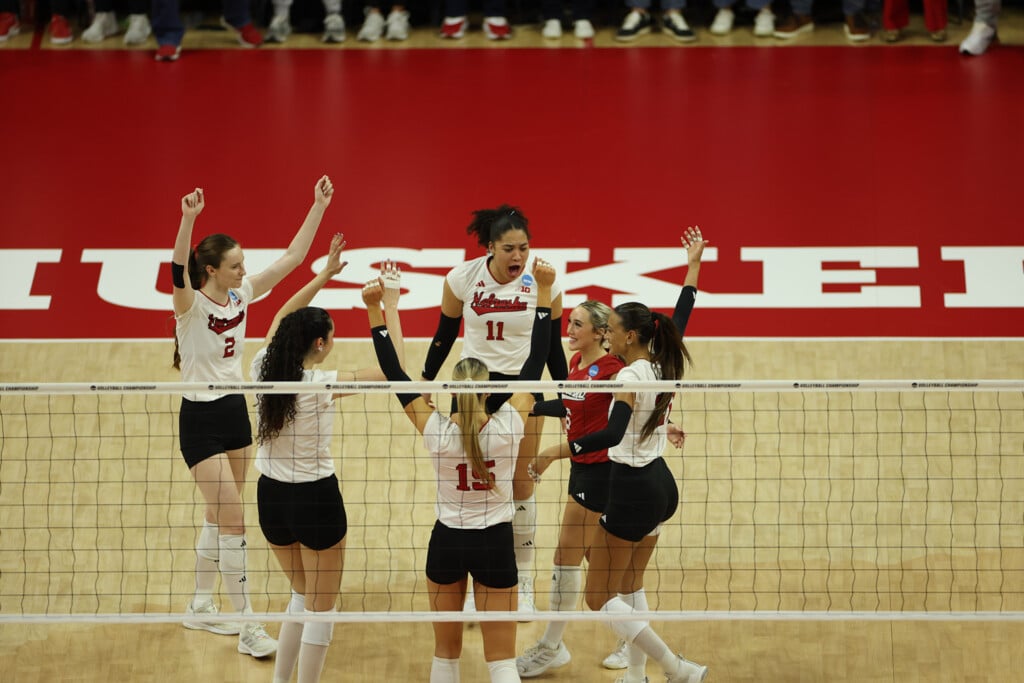
LINCOLN, Neb. (KLKN) – The undefeated Nebraska volleyball team is looking to punch its ticket to Kansas City with a win over Texas A&M on Sunday.
The Huskers face off against No. 6 Texas A&M on Channel 8. That game begins at 2 p.m.
Texas A&M is coming off a five-set win over Louisville, Husker head coach Dani Busboom Kelly’s former team.
Shortly after that match, Nebraska swept Kansas in a dominant performance inside a sold-out John Cook Arena.
The Huskers are now onto their 34th regional final in program history. That is the most regional final appearances in NCAA history.
Nebraska gets another postseason game at the Bob Devaney Center. The Huskers have won 90 home matches in the NCAA Tournament.
Only four schools nationally have 90 or more victories in the tournament.
Nebraska and Texas A&M have faced off 39 times, most recently in 2010 when the Huskers swept the Aggies on the road.
Nebraska has won 32 of those matchups.
-

 Rec Sports3 weeks ago
Rec Sports3 weeks agoFirst Tee Winter Registration is open
-

 Rec Sports2 weeks ago
Rec Sports2 weeks agoFargo girl, 13, dies after collapsing during school basketball game – Grand Forks Herald
-

 Motorsports3 weeks ago
Motorsports3 weeks agoCPG Brands Like Allegra Are Betting on F1 for the First Time
-

 Motorsports3 weeks ago
Motorsports3 weeks agoF1 Las Vegas: Verstappen win, Norris and Piastri DQ tighten 2025 title fight
-
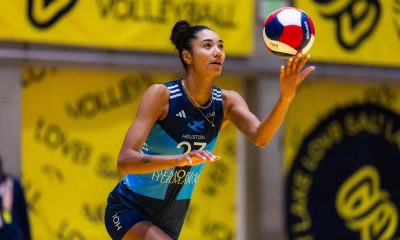
 Sports3 weeks ago
Sports3 weeks agoTwo Pro Volleyball Leagues Serve Up Plans for Minnesota Teams
-

 Sports3 weeks ago
Sports3 weeks agoUtah State Announces 2025-26 Indoor Track & Field Schedule
-
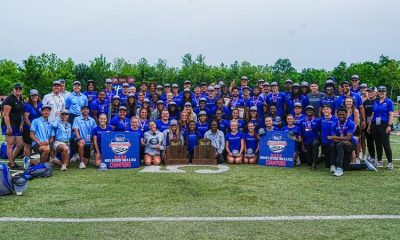
 Sports3 weeks ago
Sports3 weeks agoSycamores unveil 2026 track and field schedule
-

 Motorsports2 weeks ago
Motorsports2 weeks agoJo Shimoda Undergoes Back Surgery
-

 Motorsports2 weeks ago
Motorsports2 weeks agoRedemption Means First Pro Stock World Championship for Dallas Glenn
-

 Sports3 weeks ago
Sports3 weeks agoTexas volleyball vs Kentucky game score: Live SEC tournament updates

























